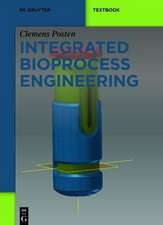Technology of Paper Recycling
Editat de R. McKinneyen Limba Engleză Hardback – 30 noi 1994
| Toate formatele și edițiile | Preț | Express |
|---|---|---|
| Paperback (1) | 1222.62 lei 6-8 săpt. | |
| SPRINGER NETHERLANDS – 2 oct 2012 | 1222.62 lei 6-8 săpt. | |
| Hardback (1) | 1228.15 lei 6-8 săpt. | |
| SPRINGER NETHERLANDS – 30 noi 1994 | 1228.15 lei 6-8 săpt. |
Preț: 1228.15 lei
Preț vechi: 1497.75 lei
-18% Nou
Puncte Express: 1842
Preț estimativ în valută:
235.00€ • 246.02$ • 194.45£
235.00€ • 246.02$ • 194.45£
Carte tipărită la comandă
Livrare economică 05-19 aprilie
Preluare comenzi: 021 569.72.76
Specificații
ISBN-13: 9780751400175
ISBN-10: 0751400173
Pagini: 401
Ilustrații: XIV, 401 p.
Dimensiuni: 155 x 235 x 24 mm
Greutate: 0.74 kg
Ediția:1994
Editura: SPRINGER NETHERLANDS
Colecția Springer
Locul publicării:Dordrecht, Netherlands
ISBN-10: 0751400173
Pagini: 401
Ilustrații: XIV, 401 p.
Dimensiuni: 155 x 235 x 24 mm
Greutate: 0.74 kg
Ediția:1994
Editura: SPRINGER NETHERLANDS
Colecția Springer
Locul publicării:Dordrecht, Netherlands
Public țintă
ResearchCuprins
1 Wastepaper recovery and collection.- 1.1 Introduction.- 1.2 Wastepaper recovery and reuse — the global picture.- 1.3 Wastepaper grading systems.- 1.4 Definitions used in recycling and wastepaper collection.- 1.5 Recovery of wastepapers.- 1.6 Government policies regarding wastepaper collection.- 1.7 Wastepaper prices.- References.- 2 Recovery and utilisation of wastepaper in Japan.- 2.1 History of wastepaper recovery.- 2.2 Classification of wastepaper.- 2.3 Collection routes.- 2.4 Recovery and utilisation rates.- 2.5 Legislation.- 2.6 Quality of recycled paper.- 2.7 Outline of wastepaper treatment.- 2.8 Specified facilities and chemicals.- References.- 3 Wastepaper preparation and contaminant removal.- 3.1 Introduction.- 3.2 Wastepaper contaminants.- 3.3 Equipment layout.- 3.4 Wastepaper processing.- References.- 4 Chemical use in recycling.- 4.1 Introduction.- 4.2 Chemical use in deinking — an overview.- 4.3 Specific chemicals used in deinking.- 4.4 Some specific recycling problems.- 4.5 Future deinking chemicals.- References.- 5 Recycled fibre bleaching.- 5.1 Introduction.- 5.2 Bleaching with hydrogen peroxide.- 5.3 Hydrogen peroxide addition in the pulper.- 5.4 Hydrogen peroxide in tower bleaching.- 5.5 Pulper bleaching versus tower bleaching.- 5.6 Splitting of peroxide between pulper and tower.- 5.7 Disperser bleaching with hydrogen peroxide.- 5.8 Parameters to control hydrogen peroxide efficiency.- 5.9 Oxygen and ozone bleaching for recycled fibres.- 5.10 Reductive bleaching agents.- 5.11 Sodium hypochlorite.- References.- 6 The effects of recycling on pulp quality.- 6.1 Introduction.- 6.2 The general effect of recycling.- 6.3 Factors affecting the recycle potential.- 6.4 Methods of controlling the paper making potential.- 6.5 Conclusions.- References.- 7Water and waste water treatment in recycling mills.- 7.1 Introduction.- 7.2 Freshwater use in recycling.- 7.3 Effluent loads.- 7.4 Effluent treatment standards.- 7.5 Physiochemical treatment processes — waste water clarification.- 7.6 Biological treatment systems.- 7.7 Sludge treatment and disposal.- 7.8 Chemical use in water clarification and effluent treatment.- References.- 8 Manufacture of packaging grades from wastepaper.- 8.1 Introduction.- 8.2 Wastepaper grades used in packaging production.- 8.3 Wastepaper processing of brown grades.- 8.4 Board machine runnability with recycled grades.- 8.5 Effect of use of recycled fibres on product properties.- 8.6 Properties of recycled fibre grades.- 8.7 Use of OCC to produce bleached board.- References.- 9 Manufacture of newsprint using recycled fibres.- 9.1 Introduction.- 9.2 Wastepaper grades used.- 9.3 Recycled fibre processing.- 9.4 Production of newsprint from recycled fibres.- 9.5 Quality and performance of recycled newsprint.- References.- 10 The manufacture of tissue using recycled fibres.- 10.1 Introduction.- 10.2 Production problems associated with recycled fibres.- 10.3 Effects of recycled-fibre use on tissue quality.- 10.4 Future use of recycled fibres in tissue.- References.- 11 Manufacturing of printing and writing papers using recycled.- 11.1 Introduction.- 11.2 Printing and writing grades.- 11.3 Recovered wastepaper grades.- 11.4 Recycled-fibre manufacturing.- 11.5 Properties of recycled fibres.- 11.6 Recycled-fibre stock preparation systems.- 11.7 Paper making characteristics of recycled fibres.- 11.8 Paper machine manufacturing technology.- 11.9 Quality and performance of recycled printing and writing papers.- 11.10 Economics of recovered wastepaper usage.- 11.11 Future for recycled printing and writingpapers.- References.- 12 Printing trends — impact on paper recycling.- 12.1 Introduction.- 12.2 The influence of paper grade and paper properties.- 12.3 General composition of a printing ink.- 12.4 Ink drying.- 12.5 Impact of different printing processes and recycling.- 12.6 Future development trends of different printing processes.- References.- 13 Environmental impacts of paper recycling.- 13.1 Introduction.- 13.2 Relationships between paper recycling and current environmental issues.- 13.3 Environmental management systems.- References.
Recenzii
...an important addition to the information on paper recycling and should find ready acceptance from its intended primary audience. It should also appeal to a wider audience from the stand point of a reference book. - Paper and Board Recycling; McKinney's breadth and depth of recycling knowledge is quite evident...the book should be a valuable addition to the libraries of those new as well as those experienced in recycling. The wealth of information and details in certain chapters should constitute a worthwhile investment. I wholeheartedly recommend the book to all with an interest in paper recycling. - Progress in Paper Recycling; ...it will also prove to be a valuable reference document for those who want, or need to know more about paper recycling. - Chemistry and Industry





















